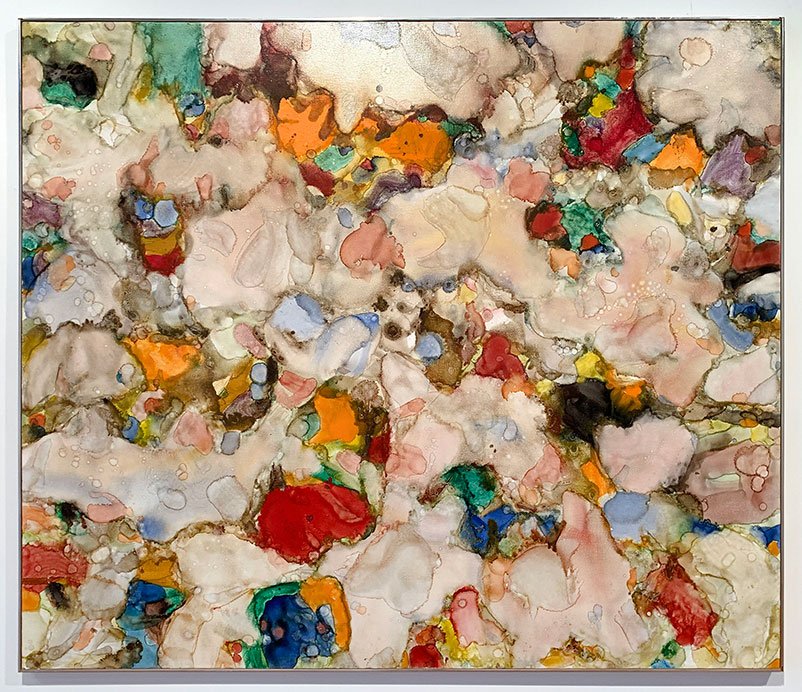Alden Mason
1970s - A Time of Change
June 1 - July 15, 2017
Opening Reception: “First Thursday,” June 1, 6-8pm
For Alden Mason, the 1970s was a decade of great challenges and rewards as an artist, wherein he produced some of his most memorable and groundbreaking work.
Watercolor
Mason pushed his natural inclination for watercolor toward a new boldness, abstraction and scale. The rich, earthy quality of these watercolors featured large ovoid shapes, simultaneously grounded and buoyant. The gestures both swirled around the pods and dripped into the grounds holding them, often including brilliantly colored details.
Drawings
His drawings then were large works as well, often 50 x 40 inches, drawn with oil pastels and rubbed with thinners, conveying some of the same aqueous nature of the watercolors. These drawings ranged from landscapes to figure drawings, often completely overwhelmed with sexual energy and innuendo. Rock formations, seen during trips through the Southwest deserts and parks, became loopy phalluses and swollen breasts. Large head drawings suggested representation of personality but were entirely lacking the specificity of portraiture.
Paintings
The “Burpee Garden” series dates from 1972-73 specifically but, in sensibility, goes on until 1977. The series title derives from the Burpee Seed Company catalog which Mason remembered from his Skagit Valley childhood. With their audacious color, surprising scale, and exuberant abstraction, they represented a break with the somber colored spiritually inspired motifs and poetic narratives that had typified the Northwest School.
The audacious quality of the “Burpee Garden” works is in their lack of predictability as the color is pooled and poured on, then dragged, pushed and pulled around by house painting brushes, rags, even brooms. The artist hovered over his paint surface, often kneeling on boards a few inches above the surface. With this method, Mason had surprisingly great control of his gesture and imagery but rarely showed a "brushstroke." His brilliant, jewel-like color itself came from fine quality oil paint, thinned down with all manner of thinners, varnishes and driers. In this liquid state, the paint was like watercolor and Mason dealt with it similarly– but now on an heroic scale, typically about 70 x 80 inches. Though he didn't typically correct finished works that he felt had failed as a whole, Mason could edit them by cutting out the “good parts” as smaller works.
Work in exhibition







Oil on canvas
32 x 16 inches
SOLD